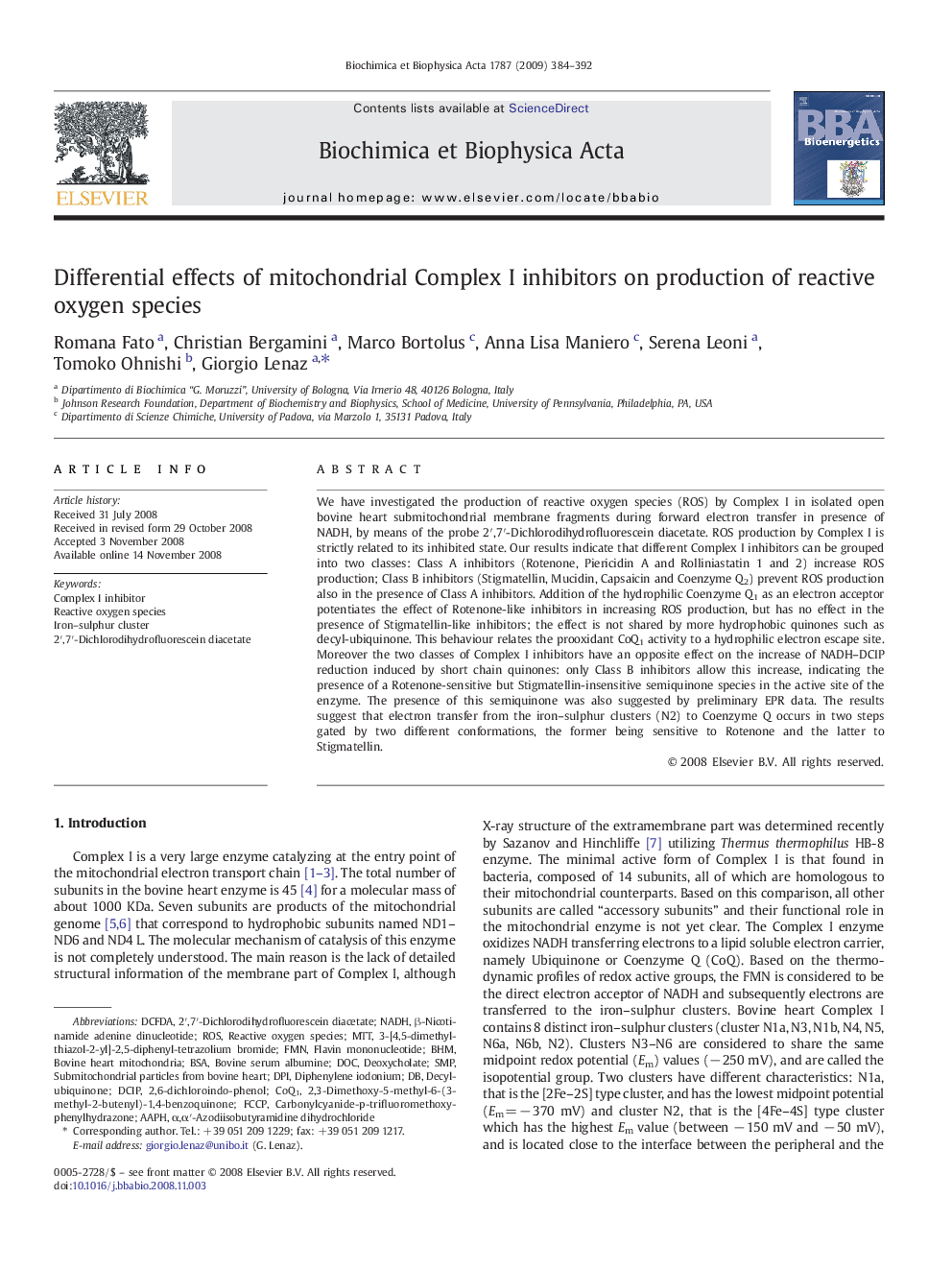| Article ID | Journal | Published Year | Pages | File Type |
|---|---|---|---|---|
| 10796009 | Biochimica et Biophysica Acta (BBA) - Bioenergetics | 2009 | 9 Pages |
Abstract
We have investigated the production of reactive oxygen species (ROS) by Complex I in isolated open bovine heart submitochondrial membrane fragments during forward electron transfer in presence of NADH, by means of the probe 2â²,7â²-Dichlorodihydrofluorescein diacetate. ROS production by Complex I is strictly related to its inhibited state. Our results indicate that different Complex I inhibitors can be grouped into two classes: Class A inhibitors (Rotenone, Piericidin A and Rolliniastatin 1 and 2) increase ROS production; Class B inhibitors (Stigmatellin, Mucidin, Capsaicin and Coenzyme Q2) prevent ROS production also in the presence of Class A inhibitors. Addition of the hydrophilic Coenzyme Q1 as an electron acceptor potentiates the effect of Rotenone-like inhibitors in increasing ROS production, but has no effect in the presence of Stigmatellin-like inhibitors; the effect is not shared by more hydrophobic quinones such as decyl-ubiquinone. This behaviour relates the prooxidant CoQ1 activity to a hydrophilic electron escape site. Moreover the two classes of Complex I inhibitors have an opposite effect on the increase of NADH-DCIP reduction induced by short chain quinones: only Class B inhibitors allow this increase, indicating the presence of a Rotenone-sensitive but Stigmatellin-insensitive semiquinone species in the active site of the enzyme. The presence of this semiquinone was also suggested by preliminary EPR data. The results suggest that electron transfer from the iron-sulphur clusters (N2) to Coenzyme Q occurs in two steps gated by two different conformations, the former being sensitive to Rotenone and the latter to Stigmatellin.
Keywords
DCFDA2,3-dimethoxy-5-methyl-6-(3-methyl-2-butenyl)-1,4-benzoquinoneComplex I inhibitorBHMCoQ1DCIPDPIFCCPAAPHFMNDOC2′,7′-dichlorodihydrofluorescein diacetateBSAMTTROSβ-nicotinamide adenine dinucleotidebovine serum albumineIron–sulphur clusterSMPdeoxycholatediphenylene iodoniumflavin mononucleotideBovine heart mitochondriaNADHcarbonylcyanide-p-trifluoromethoxyphenylhydrazoneReactive oxygen species
Related Topics
Life Sciences
Agricultural and Biological Sciences
Plant Science
Authors
Romana Fato, Christian Bergamini, Marco Bortolus, Anna Lisa Maniero, Serena Leoni, Tomoko Ohnishi, Giorgio Lenaz,
